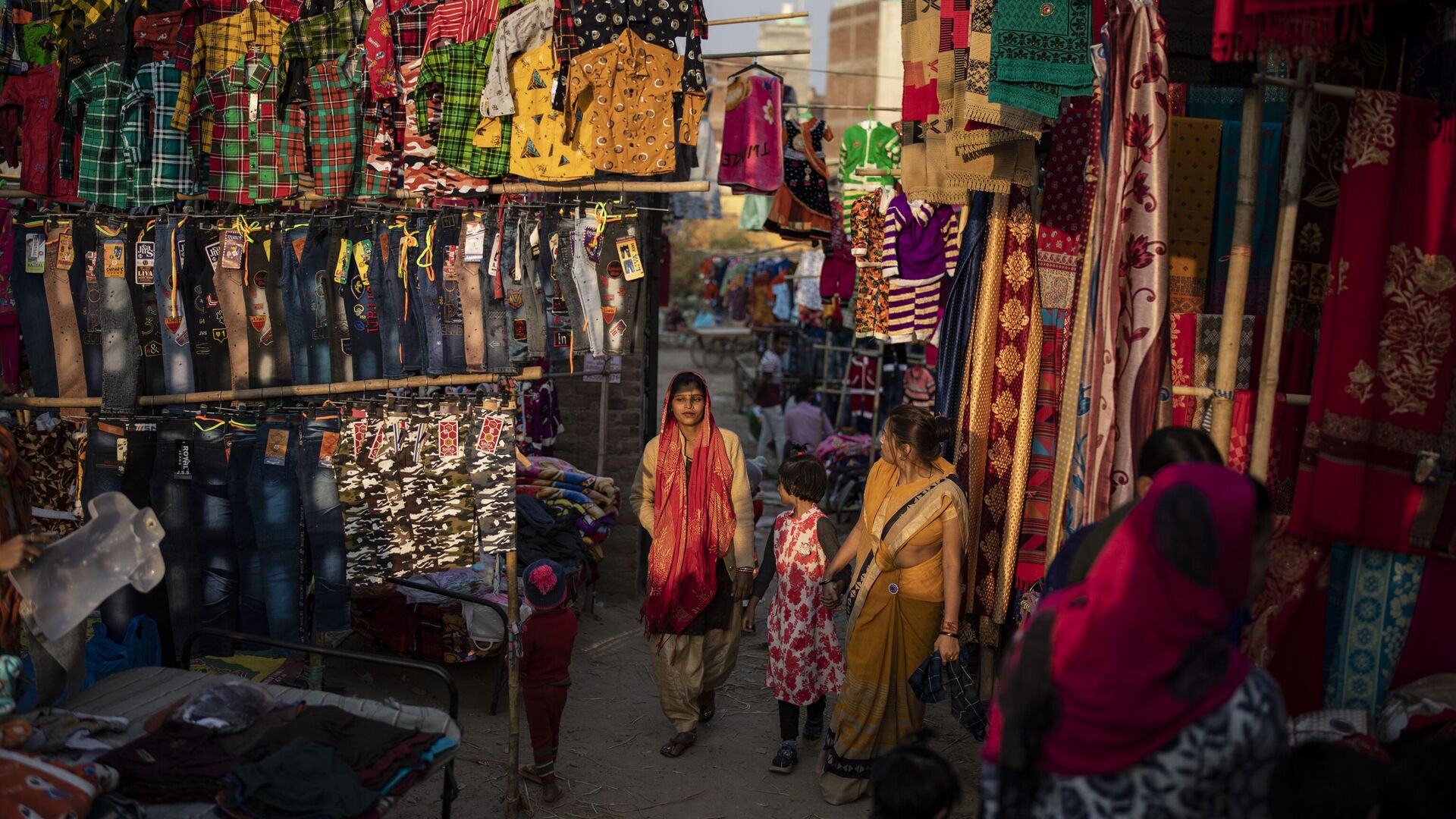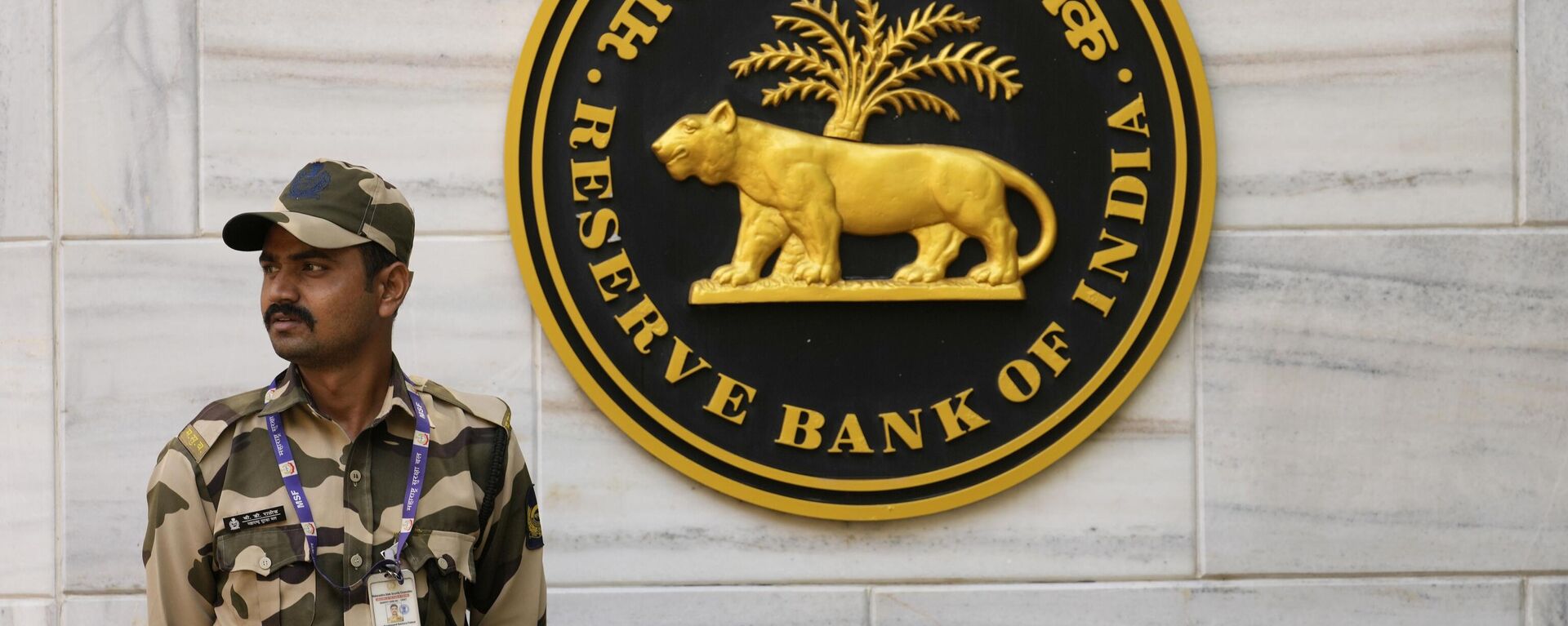https://sputniknews.in/20230604/no-impact-on-black-economy-expert-decodes-indias-decision-to-withdraw-2000-rupee-banknote-2287013.html
'No Impact on Black Economy': Expert Decodes India's Decision to Withdraw 2,000 Rupee Banknote
'No Impact on Black Economy': Expert Decodes India's Decision to Withdraw 2,000 Rupee Banknote
Sputnik India
The Reserve Bank of India’s (RBI) decision to gradually phase out the 2,000 rupee-note by September won’t have any positive or negative impact on the economy, an Indian economist has told Sputnik.
2023-06-04T12:00+0530
2023-06-04T12:00+0530
2023-06-04T12:00+0530
business & economy
india
economics
reserve bank of india (rbi)
gold reserves
global economy
https://cdn1.img.sputniknews.in/img/07e7/06/02/2304430_0:320:3072:2048_1920x0_80_0_0_1b162bfaf3081909a79b7f06fec07b20.jpg
The Reserve Bank of India’s (RBI) decision to gradually phase out the 2,000 rupee-note by September won’t have any positive or negative impact on the economy, an Indian economist has told Sputnik.NR Bhanumurthy, a professor at the New Delhi-based National Institute of Public Finance and Policy (NIPFP), said that the observance of any impact on the market is likely to be part of a “very short-term” scenario.According to Indian media reports, Indian consumers have been rushing to jewelers to buy gold with their stocked up 2,000-rupee bills in the wake of the RBI’s decision last month. The price of 10 grams of gold has slightly increased since the announcement due to a sudden surge in demand.Further, petrol pump owners have expressed concern about the rise in number of transactions involving the 2,000-rupee tender.During the de-monetization drive announced by Prime Minister Narendra Modi in November 2016, 500 ($6) and 1,000 ($12) INR notes ceased to be legal tender in an overnight decision. At the time, these two denominations constituted around 86 percent of the currency in circulation.In comparison, the 2,000-ruppee note constituted just around 10.8 percent of the currency in circulation on March 31, 2023, as per the RBI. About 89 percent of the 2,000 denomination banknotes were issued prior to March 2017 and are at the end of their estimated life-span of 4-5 years, the central bank has said.Bhanumurthy noted that the 2,000 rupee note could still be used as legal tender till September 30 and could also be exchanged at banks across the country, in accordance with RBI rules. The central bank has imposed a limit of 10 notes per day on the over-the-counter exchange.He explained that the “velocity” of the 2,000 INR bill in the economy has been “very limited” for the last few years.In economic terms, the velocity of a given currency is the rate at which money is exchanged.‘No Long-term Impact on the Black Economy'Bhanumurthy also rejected the argument that RBI’s move would have any long-term “positive impact”, especially in terms of eradicating the use of ‘black money’, or unaccounted wealth which has evaded tax authorities.In 2016, the Indian government said that curbing black money was one of the primary reasons for phasing out the 500 and 1,000 INR banknotes.This time around, the RBI has said that the bill has been withdrawn in line with the ‘Clean Note Policy’, which envisages availability of high-quality currency bills in the system.
https://sputniknews.in/20230522/rbi-rejects-current-shortage-concerns-after-withdrawal-of-2000-rupee-note-2099795.html
india
Sputnik India
feedback.hindi@sputniknews.com
+74956456601
MIA „Rossiya Segodnya“
2023
Dhairya Maheshwari
https://cdn1.img.sputniknews.in/img/07e6/0c/13/138962_0:0:641:640_100x100_80_0_0_2cb44360dbcdf6d84bf4b299cd045917.jpg
Dhairya Maheshwari
https://cdn1.img.sputniknews.in/img/07e6/0c/13/138962_0:0:641:640_100x100_80_0_0_2cb44360dbcdf6d84bf4b299cd045917.jpg
News
en_IN
Sputnik India
feedback.hindi@sputniknews.com
+74956456601
MIA „Rossiya Segodnya“
Sputnik India
feedback.hindi@sputniknews.com
+74956456601
MIA „Rossiya Segodnya“
Dhairya Maheshwari
https://cdn1.img.sputniknews.in/img/07e6/0c/13/138962_0:0:641:640_100x100_80_0_0_2cb44360dbcdf6d84bf4b299cd045917.jpg
2000 rupees deposit limit per day, 2000 rupee deposit limit, 2000 rupee note
2000 rupees deposit limit per day, 2000 rupee deposit limit, 2000 rupee note
'No Impact on Black Economy': Expert Decodes India's Decision to Withdraw 2,000 Rupee Banknote
The 2,000-rupee note ($24) was introduced in November 2016 to meet the “currency requirement” of the economy in an expeditious manner after the withdrawal of legal tender status of all 500 ($6) and 1000 ($12) INR banknotes. India’s central bank stopped printing the 2,000 INR note in 2018-19.
The Reserve Bank of India’s (RBI) decision to gradually phase out the 2,000 rupee-note by September won’t have any positive or negative impact on the economy, an Indian economist has told Sputnik.
NR Bhanumurthy, a professor at the New Delhi-based National Institute of Public Finance and Policy (NIPFP), said that the observance of any impact on the market is likely to be part of a “very short-term” scenario.
According to Indian media reports, Indian consumers have been rushing to jewelers to buy gold with their stocked up 2,000-rupee bills in the wake of the RBI’s decision last month. The price of 10 grams of gold has slightly increased since the announcement due to a sudden surge in demand.
Further, petrol pump owners have expressed concern about the rise in number of transactions involving the 2,000-rupee tender.
“This is not de-monetization. The 2,000-rupee bill is going back to the RBI. It is a routine monetary policy exercise based on economic principles,” Bhanumurthy remarked.
During the de-monetization drive announced by Prime Minister Narendra Modi in November 2016, 500 ($6) and 1,000 ($12) INR notes ceased to be legal tender in an overnight decision. At the time, these two denominations constituted around 86 percent of the currency in circulation.
In comparison, the 2,000-ruppee note constituted just around 10.8 percent of the currency in circulation on March 31, 2023, as per the RBI. About 89 percent of the 2,000 denomination banknotes were issued prior to March 2017 and are at the end of their estimated life-span of 4-5 years, the central bank has said.
Bhanumurthy noted that the 2,000 rupee note could still be used as legal tender till September 30 and could also be exchanged at banks across the country, in accordance with RBI rules. The central bank has imposed a limit of 10 notes per day on the over-the-counter exchange.
He explained that the “velocity” of the 2,000 INR bill in the economy has been “very limited” for the last few years.
“The note has had a very limited user value. There has been an increasing thrust towards the digitization of the economy because of which digital transactions have been increasing,” he said.
In economic terms, the velocity of a given currency is the rate at which money is exchanged.
‘No Long-term Impact on the Black Economy'
Bhanumurthy also rejected the argument that RBI’s move would have any long-term “positive impact”, especially in terms of eradicating the use of ‘black money’, or unaccounted wealth which has evaded tax authorities.
“There is going to be a very mild impact on the black economy simply because the low prevalence of these notes in the system. Any impact is going to be short-term,” he said.
In 2016, the Indian government said that curbing black money was one of the primary reasons for phasing out the 500 and 1,000 INR banknotes.
This time around, the RBI has said that the bill has been withdrawn in line with the ‘Clean Note Policy’, which envisages availability of high-quality currency bills in the system.



